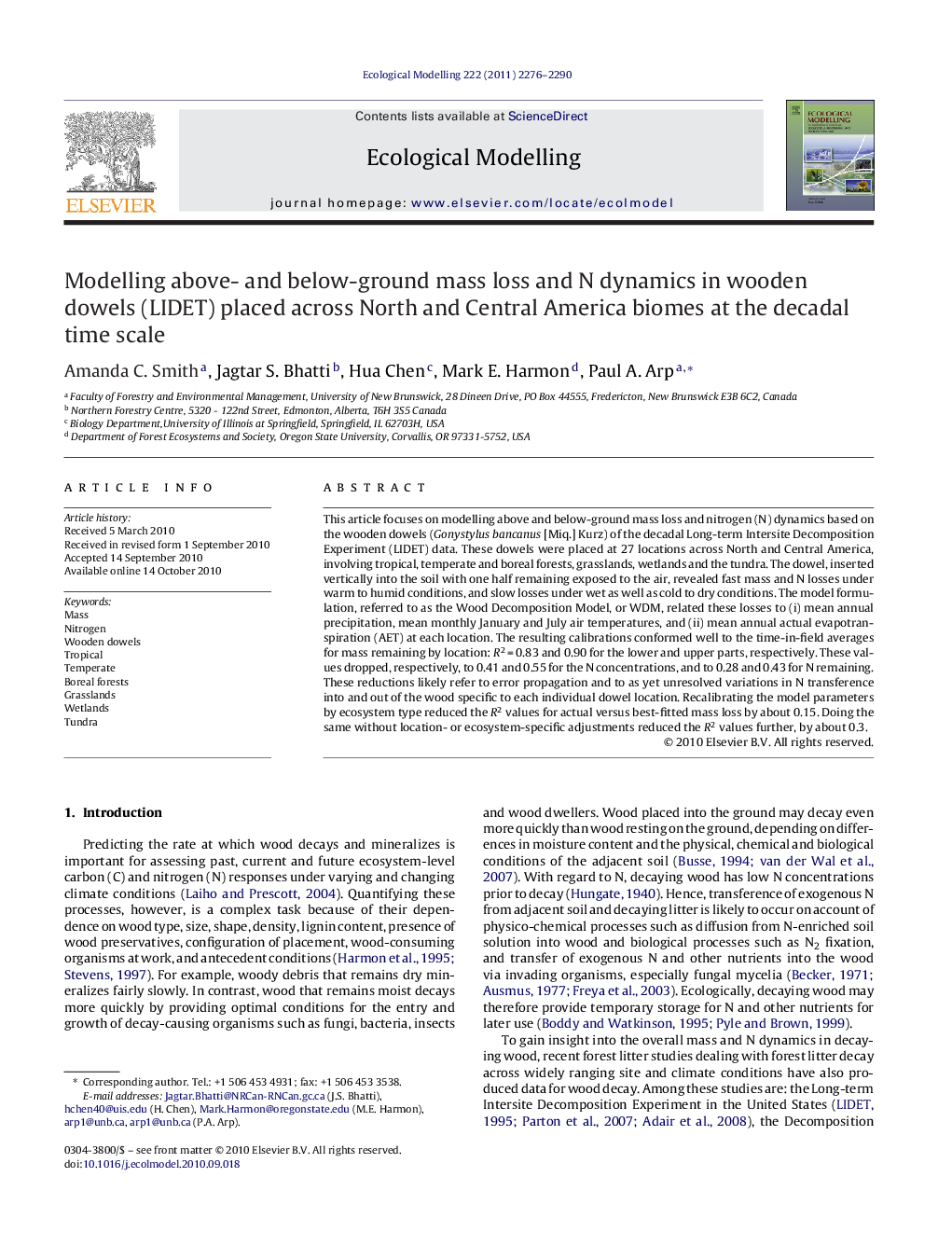| Article ID | Journal | Published Year | Pages | File Type |
|---|---|---|---|---|
| 4376872 | Ecological Modelling | 2011 | 15 Pages |
This article focuses on modelling above and below-ground mass loss and nitrogen (N) dynamics based on the wooden dowels (Gonystylus bancanus [Miq.] Kurz) of the decadal Long-term Intersite Decomposition Experiment (LIDET) data. These dowels were placed at 27 locations across North and Central America, involving tropical, temperate and boreal forests, grasslands, wetlands and the tundra. The dowel, inserted vertically into the soil with one half remaining exposed to the air, revealed fast mass and N losses under warm to humid conditions, and slow losses under wet as well as cold to dry conditions. The model formulation, referred to as the Wood Decomposition Model, or WDM, related these losses to (i) mean annual precipitation, mean monthly January and July air temperatures, and (ii) mean annual actual evapotranspiration (AET) at each location. The resulting calibrations conformed well to the time-in-field averages for mass remaining by location: R2 = 0.83 and 0.90 for the lower and upper parts, respectively. These values dropped, respectively, to 0.41 and 0.55 for the N concentrations, and to 0.28 and 0.43 for N remaining. These reductions likely refer to error propagation and to as yet unresolved variations in N transference into and out of the wood specific to each individual dowel location. Recalibrating the model parameters by ecosystem type reduced the R2 values for actual versus best-fitted mass loss by about 0.15. Doing the same without location- or ecosystem-specific adjustments reduced the R2 values further, by about 0.3.
